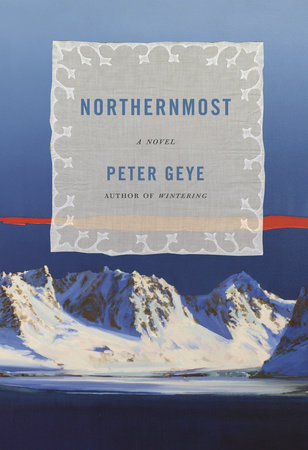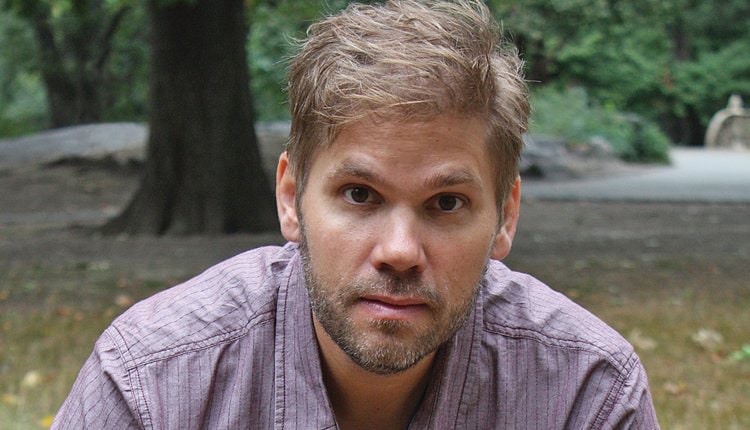Peter Geye is so thrilled we’re talking about snow. It’s mid-February, his hometown of Minneapolis is enjoying a balmy mid-30-degree day, and unlike most of us curmudgeons praying for sunlight he’s not exactly ecstatic the winds are starting to change. Spring is fine. Spring is spring. But winter? Winter is where every story seems to find its apex. That’s if you’re asking him, anyway.
It’s not that he doesn’t understand the appeal of going outside without gloves and four layers of Patagonia gear, but the author’s spent most of his life relishing the winter. Yes, there was the time he spent ski jumping as a young man, and any Minnesotan is going to be familiar with cold, but he’s talking about a more intimate acquaintance. “This is going to sound ridiculous,” he says, and it does, “but I feel like a soulful connection to the season.”
That sounds ridiculous, sure, until you read Geye’s writing. Nathan Hill, author of The Nix, reviewed Geye’s most recent book, Northernmost, and referred to him as “the poet laureate of snow.” Whereas other writers, transfixed by Hemingway’s prose — as Geye admits he himself once was; he’s since grown disillusioned by the late author’s personal life — might chase after descriptions of sunsets and blistering summers, Geye has turned his Eide family trilogy into a masterclass on how to write about winter.

Northernmost is the end of an era. It wraps up the Eide family story, one that spans centuries and continents but always finds its way back to fictional Gunflint, Minnesota, along Geye’s beloved North Shore. Its dual protagonists are relatives, though they know nothing of each other. One is Odd Einar Eide, a native Norwegian living in the northernmost — yes, you get it now — town in the world, Hammerfest, circa 1897. Greta, his great-great-great-granddaughter, is battling her own 21st-century demons in Minnesota.
At the start of this story, Odd Einar has just returned from a misadventure, if one could call it that, in the Arctic. He’s spent days in the winter wilderness, where his hunting partner has been slaughtered by an ice bear, which also causes the unfortunate escape of their boat. Stranded and alone, he survives by developing a sort of kinship with the snow. He respects his smallness in relation to it. It is everywhere. It is all powerful. It literally spells his life or death. He abandons all other faith, but he believes in the snow.
Meanwhile, Greta is navigating her own ruin, though hers is of the domestic sort. Her marriage is a failure. As her husband, desperate to patch things up, flies to Norway for work, she intends to follow him to Oslo so she can rip off the Band-Aid. Instead, she flies to Hammerfest for unknown reasons. She explores the churches and restaurants, discovering her lineage and sipping aquavit as she stumbles, conveniently, upon a new romance.
She is bitter and angry and doubtlessly will be deemed unlikeable by a number of readers. She makes choices that might seem selfish, especially when it comes to her children. These are difficult to justify. And yet, there’s something refreshing about watching Greta, a woman, have the desire and courage to rediscover herself amidst the chill. She unearths hope just as her great-great-great grandfather worries he will lose it. She wants more. And it is rare that a woman is allowed to want.
Still, it is in Odd Einar’s tale where Geye’s talent comes alive. Yes, Geye more naturally nails Greta’s voice — after all, it’s written from the perspective of a middle-aged Minnesotan parent going through a divorce, much like Geye himself did a few years ago. And there are times Odd Einar feels less a character than a fable. But perhaps that’s purposeful. Odd Einar’s description of the Arctic is ethereal. It is gorgeous. It is amazing Geye has never spent more than a couple weeks in Norway.
Inspired, in part, by real stories and maps from the legendary explorer Fridtjof Nansen’s Arctic voyages, Northernmost is carefully, intricately researched. But of course it is. Geye would never do winter dirty. Nor would he half-heartedly leave his characters with anything less than an epic.
“It feels so strange to just sort of cast them aside,” he says of ending his characters’ trilogy. For more than a decade, this family has been his family. He estimates he’s spent more “time” with them than his own children. He recognizes that might seem strange to non-authors, perhaps as strange as feeling a soul connection with a season. But he doesn’t mind it. All those stories, all that snow… they take him out of his own mind. Away from his self.
That’s where he’s most comfortable.
Peter Geye will visit Skylark Bookshop to discuss Northernmost on Wednesday, June 3, at 6 p.m.


